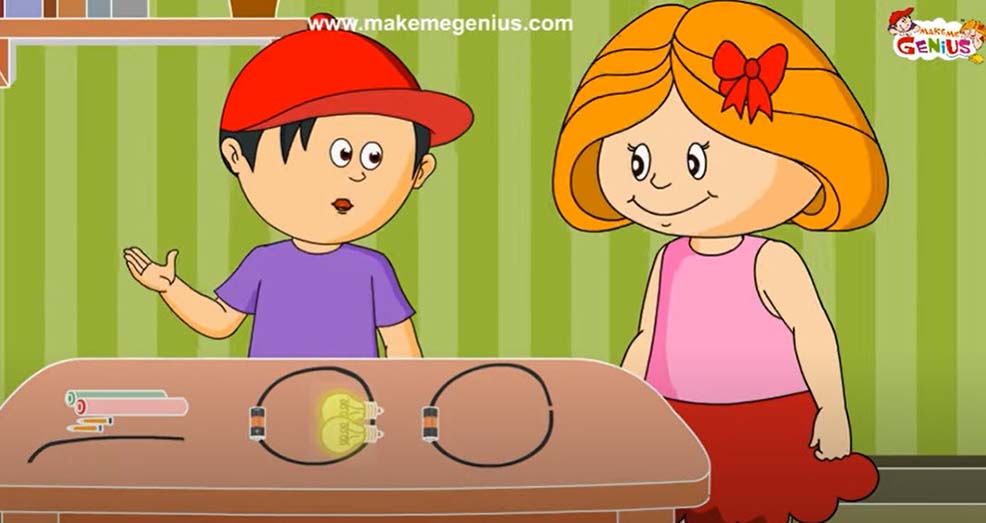Standards
Science – SC.6.P.13.1
Investigate and describe types of forces including contact forces and forces acting at a distance, such as electrical, magnetic, and gravitational.
Big Idea(s)
Forces and Changes in Motion
- It takes energy to change the motion of objects.
- Energy change is understood in terms of forces–pushes or pulls.
- Some forces act through physical contact, while others act at a distance.
Essential Question
How does energy have the ability to work or cause change?
Vocabulary
Energy • Potential Energy • Circuit • Positive Charge • Negative Charge • Reaction • Electrons • Current • Electricity • Simple Circuit • Battery • Complete Circuit • Incomplete Circuit • Velocity • Attraction • Resistor • Watt • Volt
Background Information
Electricity was discovered by the ancient Greeks who demonstrated that rubbing fur against amber led to a mutual attraction between the two materials. However, it was not until 1800 that Alessandro Volta produced a steady electrical current.
Electricity is produced by the flow of subatomic charged particles known as electrons. Electrons are among the smallest known particles and have a size of approximately one quadrillionth of a meter (one quadrillionth of a foot).
One of the simplest electrical circuits studied consists of a battery and a resistor. A resistor is an electrical component that reduces the flow of electrical current. On the microscopic scale, resistance is produced by electrons knocking into each other and rebounding from wire boundaries. This reduces their velocity, and therefore, their current.
An electrical circuit helps a continuous flow of electrons to go through a uniform direction through a set of wires. This flow of energy/electrons occurs in a never-ending closed loop made up of conductive materials. The battery is the major component of an electrical circuit which acts as the power source to light up the bulb. It provides the energy which then helps the electrons to flow.
Guiding Questions
- What is energy?
- What is potential energy?
- How is energy used in lighting up a light bulb?
- What can be done to create electricity?
Instructional Sequence
Science Lab – Problem Statement:
- How can you make a light bulb turn on using only the materials provided in this inquiry lab?
Fun Facts
Did you know that….
- The amount of flowing electric charge in one second is called a current?
- Electricity travels at the speed of light – more than 186,000 miles per second?
- A spark of static electricity can measure up to three thousand (3,000) volts?
- A bolt of lightning can measure up to three million (3,000,000) volts – and it lasts less than one second?
- A lightning bolt is very hot and can reach temperatures of 30,000 °C (54,000 °F)?
- Now this will amaze you; electric eels can produce strong electric shocks of around 500 volts. They use this to hunt and to protect themselves too!
- Electricity always tries to find the easiest path to the ground?
- Electricity can be made from wind, water, the sun and even animal manure?
- One medium-sized power plant can produce enough electricity for 180,000 homes?
- The first power plant – owned by Thomas Edison – opened in New York City in 1882?
Cool Kid Facts: Electricity Facts
Inquiry Type
- Guided Inquiry
- Structured Inquiry
Teacher Resources
Video: Explaining an Electrical Circuit
Video: Electrical Circuits: Series and Parallel – For Kids
Video: The Power of Circuits



